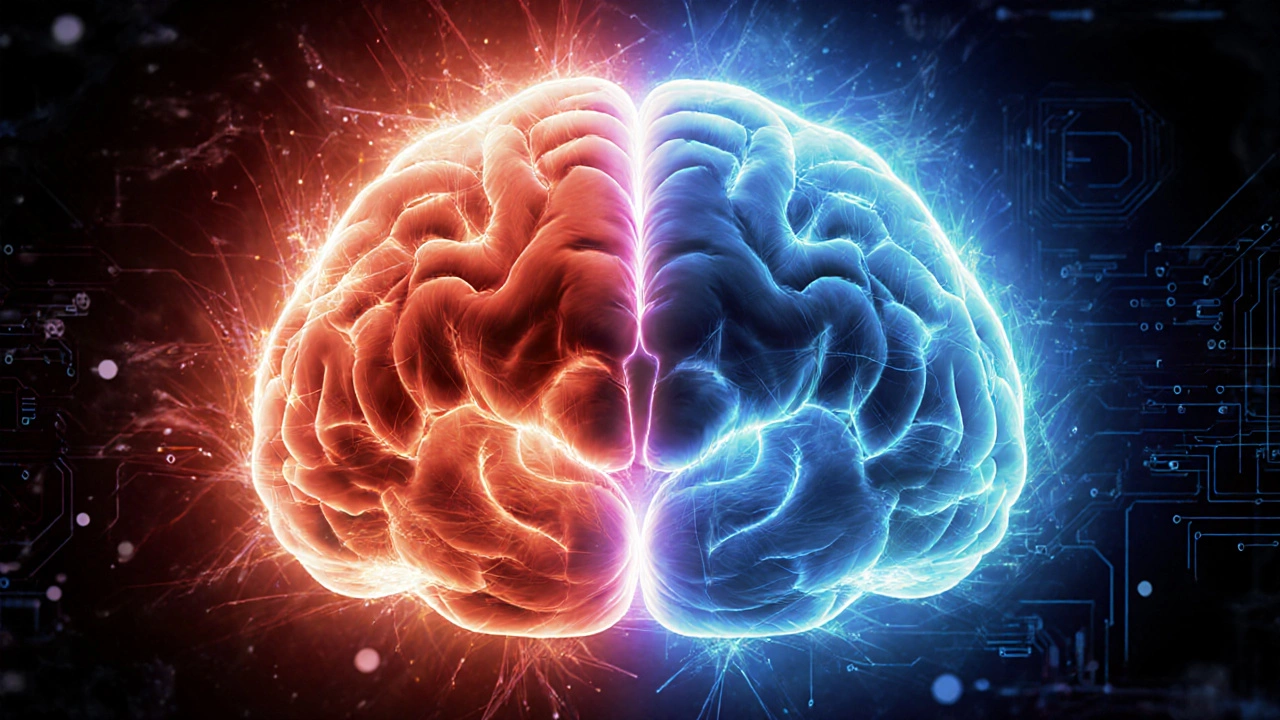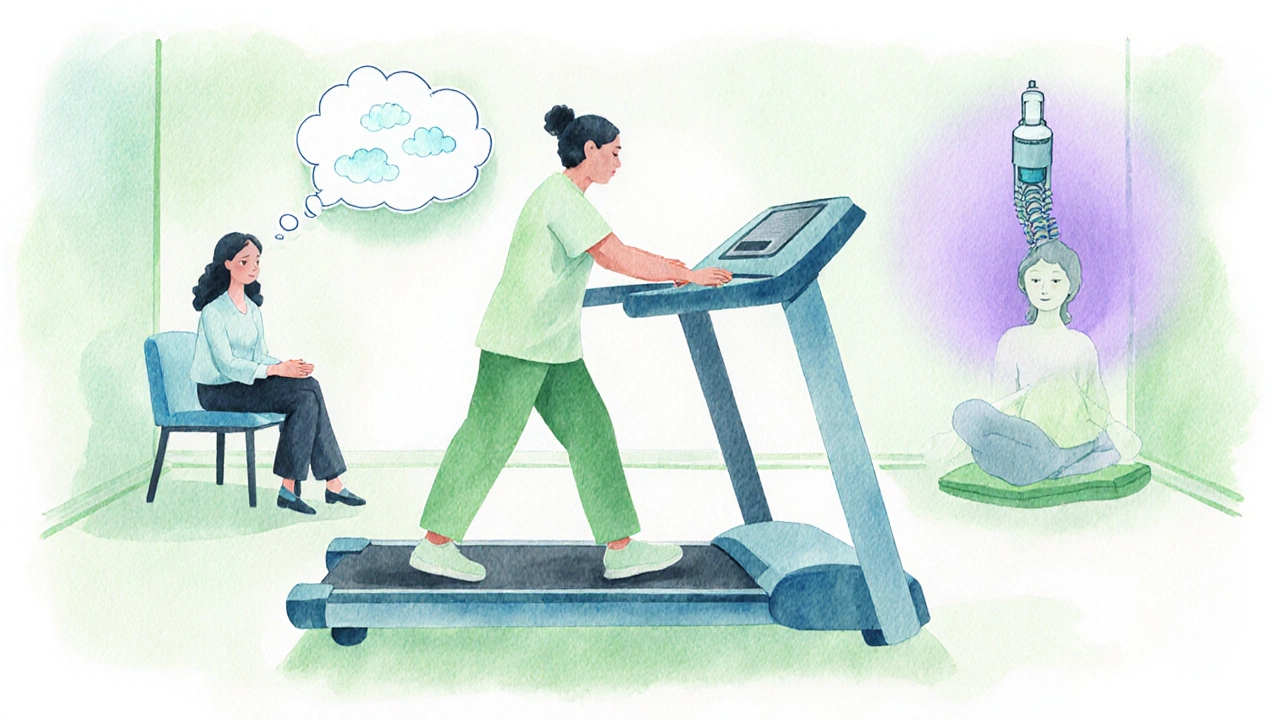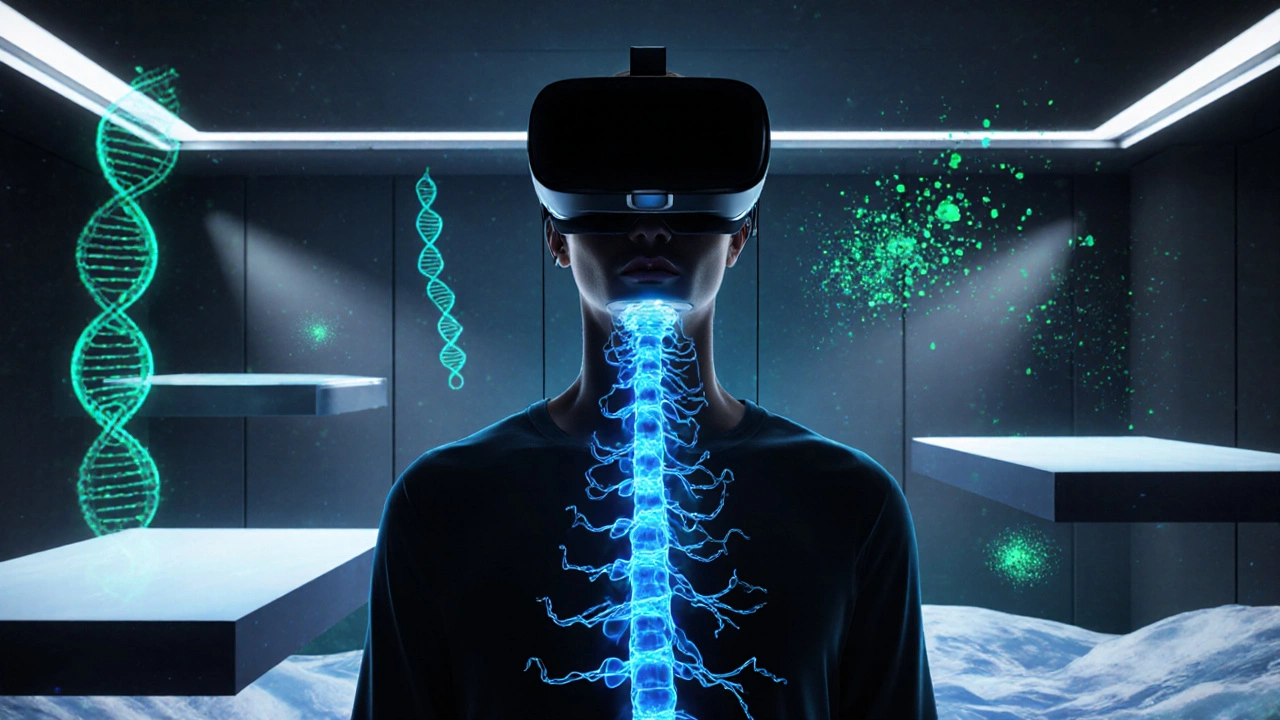 Oct, 13 2025
Oct, 13 2025
Chronic Pain Reversal Tracker
Baseline Assessment
Expected Outcomes
Estimated Pain Reduction
Progress Tracker
Add Progress Update
When we talk about chronic pain is a persistent pain condition lasting longer than three months, often linked to changes in the nervous system, the idea of actually turning it off feels like a miracle. Yet recent research shows that the nervous system can be rewired, inflammation can be reduced, and lifestyle shifts can dramatically lower pain intensity. Below we break down what reversal really means, which approaches have solid data, and how you can start a step‑by‑step plan today.
What "reversal" Actually Means
Reversing chronic pain isn’t about a single magic pill. It means moving from a state where pain dominates daily life to a state where pain is either gone or manageable enough that it no longer interferes with function. In practical terms, reversal can look like:
- Complete disappearance of pain symptoms for at least six months.
- Significant reduction (≥50%) in pain intensity, allowing normal activities.
- Restoration of normal nervous‑system signaling, as measured by quantitative sensory testing.
These outcomes are tracked in clinical trials using the Numeric Rating Scale (NRS) and the Brief Pain Inventory (BPI).
The Science Behind Reversal: Neuroplasticity
Neuroplasticity is the brain’s ability to reorganize its connections in response to experience, injury, or training is the cornerstone of modern pain reversal strategies. When pain becomes chronic, the brain’s pain matrix (insula, anterior cingulate, prefrontal cortex) becomes hyper‑responsive. Targeted therapies aim to "un‑learn" these patterns and create new, non‑painful pathways.
Key data points:
- A 2022 fMRI study showed a 30% reduction in insular activity after eight weeks of graded exposure therapy.
- Animal models demonstrate that blocking NMDA receptors during intense physical training can prevent the development of chronic pain.
Evidence‑Based Therapies That Harness Neuroplasticity
Below is a quick‑look table comparing the main treatment families that have shown reversal potential.
| Modality | Primary Mechanism | Typical Benefit (6‑month data) | Evidence Level |
|---|---|---|---|
| Physical therapy (graded exercise) | Activates motor cortex, reduces central sensitisation | 45‑60% pain reduction, improved function | High (multiple RCTs) |
| Cognitive‑behavioral therapy (CBT) | Modifies pain‑related cognitions, lowers fear‑avoidance | 30‑50% reduction, better mood | High |
| Mindfulness‑based stress reduction (MBSR) | Enhances top‑down regulation via prefrontal cortex | 20‑40% reduction, decreased opioid use | Moderate‑High |
| Spinal cord stimulation (SCS) | Electrical gates pain signals at dorsal column | 50‑70% reduction, especially in failed‑back‑surgery syndrome | High (long‑term cohort) |
| Antidepressant/anticonvulsant meds (e.g., duloxetine, gabapentin) | Modulates neurotransmitters, dampens central excitability | 15‑30% reduction, often adjunct | Moderate |

Non‑Pharmacological Power Tools
Pain neuroscience education teaches patients how the nervous system creates pain, reducing threat perception has emerged as a low‑cost, high‑impact starter. A 2021 meta‑analysis of 12 trials found an average 25% drop in NRS scores when education was paired with exercise.
Physical therapy focuses on graded movement, strength, and flexibility to desensitise nervous pathways works best when the therapist tailors load progression to the individual’s fear‑avoidance profile.
Cognitive behavioral therapy targets catastrophic thoughts, teaches coping skills, and reshapes pain behaviours reduces the emotional amplification that keeps pain circuits firing.
Mindfulness practices, especially mindfulness‑based stress reduction uses meditation and body scans to improve pain modulation, have shown a dose‑response: 8‑week programs give modest relief; 24‑week intensive retreats can push reductions >40%.
When Invasive Options Make Sense
Spinal cord stimulation delivers low‑level electrical pulses to the dorsal columns, disrupting pain signal transmission is typically reserved for patients with refractory lumbar or neuropathic pain who have failed conservative care. Long‑term data (up to 5 years) show sustained ≥50% pain relief in around 60% of implants.
Other procedures-radiofrequency ablation, intrathecal drug delivery-are on the spectrum between minimally invasive and surgical. Their reversal potential hinges on whether the underlying nerve source can be permanently altered.
Pharmacological Adjuncts: What Works and What Doesn't
Medications alone rarely achieve reversal, but they can prime the nervous system for other therapies. Antidepressants such as duloxetine increase serotonin and norepinephrine to dampen pain pathways have modest effect sizes (≈0.3) and are most useful when mood disorders coexist.
Anticonvulsants like gabapentin or pregabalin target calcium channels in hyper‑excitable nerves. Their benefit wanes after six months for many patients, highlighting the need for a tapering strategy combined with active rehab.
Opioids may mask pain but do not promote neuroplastic change. Guidelines now recommend limiting opioid use to chronic pain reversal attempts only as a bridge while non‑pharmacological treatments take hold.

Creating Your Personal Reversal Plan
- Assessment: Get a full evaluation from a pain specialist. Look for red flags (neurological deficits, systemic disease) and confirm the pain has persisted >3 months.
- Baseline Metrics: Record NRS, BPI, and functional scores (e.g., 6‑minute walk test). These numbers guide progress checks.
- Education First: Attend a pain neuroscience workshop or watch reputable videos (e.g., those produced by the American Chronic Pain Association).
- Start Graded Exercise: Work with a physio to design a weekly program that begins with low‑impact activities (walking, aquatic therapy) and progresses 10% each week.
- Introduce CBT or MBSR: Enroll in an 8‑week group or tele‑health module to reshape pain thoughts.
- Medication Review: If needed, start a low‑dose antidepressant. Schedule a 4‑week follow‑up to assess efficacy and side‑effects.
- Consider Advanced Options: If after 3‑4 months pain remains >5/10, discuss SCS or radiofrequency with your specialist.
- Track and Adjust: Re‑measure your pain scores every 4 weeks. If progress stalls, tweak the exercise intensity or add a mindfulness session.
Most people who stick to a structured plan see meaningful improvement within 6‑12 months. The key is consistency-neuroplastic change takes repeated exposure.
Common Pitfalls and How to Avoid Them
- All‑or‑nothing mindset: Expecting instant pain freedom leads to disappointment. Set incremental goals.
- Skipping education: Without understanding the brain’s role, fear‑avoidance behaviours persist.
- Over‑reliance on meds: Meds can mask pain but won’t rewire pathways; taper when other strategies show benefit.
- Ignoring mental health: Depression and anxiety amplify pain signals. Address them early with CBT or counseling.
- Inconsistent exercise: Missing sessions reduces the stimulus needed for neuroplastic change.
Future Directions - What’s on the Horizon?
Research into virtual reality (VR) exposure therapy shows promise. A 2023 pilot gave chronic low‑back patients a 38% NRS drop after 10 VR sessions that simulated graded movement.
Genetic profiling may soon help predict which patients respond best to specific neuromodulation techniques, tailoring reversal pathways even further.
Frequently Asked Questions
Can chronic pain ever disappear completely?
Yes, but it’s rare. Complete disappearance usually occurs when the underlying cause (e.g., nerve injury) heals and neuroplastic changes are fully reversed. Most patients achieve substantial reduction rather than total elimination.
How long does it take to see results from graded exercise?
Studies show measurable pain drops within 4‑6 weeks, but optimal neuroplastic remodeling often needs 3‑6 months of consistent training.
Is spinal cord stimulation a cure?
It’s not a cure, but it can provide long‑term relief by “gating” pain signals. Success depends on proper patient selection and ongoing rehab.
Do antidepressants really help with pain?
They modestly reduce pain, especially when depression co‑exists. The benefit comes from altering neurotransmitter levels that dampen central sensitisation.
Can mindfulness replace medication?
Mindfulness can lower pain intensity and opioid use, but most evidence supports using it alongside, not instead of, medication during the early phase of reversal.
What red flags mean I need urgent medical attention?
Sudden weakness, loss of bladder control, unexplained weight loss, or fever with pain are signals to seek urgent care. These suggest serious underlying pathology.
